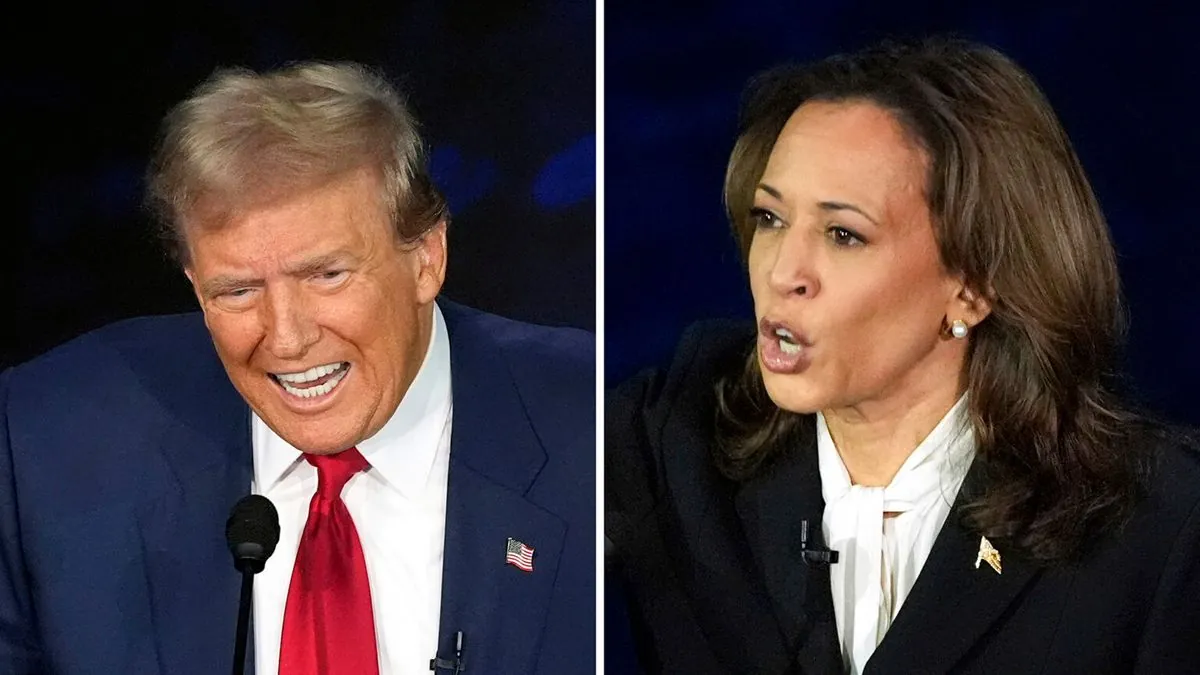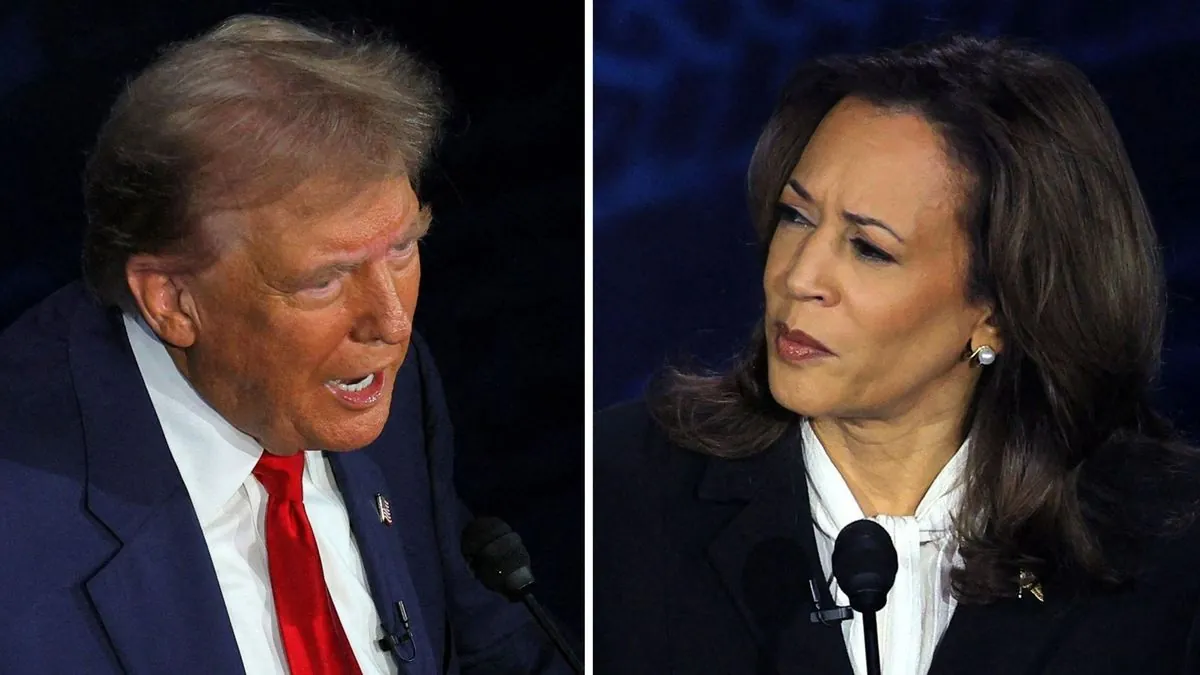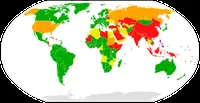Harris and Trump's Silent Battle: Body Language Steals the Show in Debate
In a recent presidential debate, Kamala Harris and Donald Trump's nonverbal cues took center stage due to muted microphones. Their facial expressions and gestures spoke volumes, captivating viewers nationwide.

In the latest presidential debate, held on September 10, 2024, Kamala Harris and Donald Trump engaged in a silent yet powerful exchange, relying heavily on nonverbal communication. With microphones muted except during designated speaking times, the candidates' body language became a crucial aspect of their performance.
Kamala Harris, the first woman, African American, and Asian American vice president, demonstrated a keen awareness of the camera's constant presence. Her facial expressions ranged from amusement to bewilderment, seemingly responding to Trump's statements without uttering a word. At times, she employed dramatic gestures, such as placing her fingers under her chin with widened eyes and a tilted head, silently conveying her skepticism.

Conversely, Donald Trump, the 45th president of the United States, maintained a more reserved demeanor. His expressions alternated between scowls and curt smiles, with occasional flashes of anger or annoyance in his eyes. Notably, Trump rarely made eye contact with Harris during her speaking time, instead focusing on the cameras or the ABC News moderators.
The debate's format, featuring a split-screen view for most of the broadcast, allowed viewers to observe both candidates simultaneously. This approach, which gained popularity in the 2000s, enabled the audience to scrutinize every reaction and microexpression.
"In televised debates, nonverbal cues can be just as impactful as spoken words. Viewers often form opinions based on a candidate's body language and facial expressions, sometimes even more so than their verbal statements."
The importance of nonverbal communication in this debate cannot be overstated. Studies have shown that body language can convey up to 55% of communication in face-to-face interactions. Moreover, the human brain processes visual information 60,000 times faster than text, making these silent cues particularly potent.
When given the opportunity to speak, both Harris and Trump utilized hand gestures to emphasize their points. This technique has been shown to enhance a speaker's persuasiveness and memorability, a fact not lost on experienced politicians.
The use of muted microphones, a rule implemented by the Commission on Presidential Debates, added a new dimension to the long-standing tradition of televised debates. Since the first such event between John F. Kennedy and Richard Nixon in 1960, these forums have played a significant role in shaping public opinion and influencing election outcomes.
As the debate concluded, it became clear that the candidates' silent battle of expressions and gestures had spoken volumes. In an era where visual communication reigns supreme, Harris and Trump's nonverbal performances may prove just as crucial as their spoken words in swaying voter opinions.


































